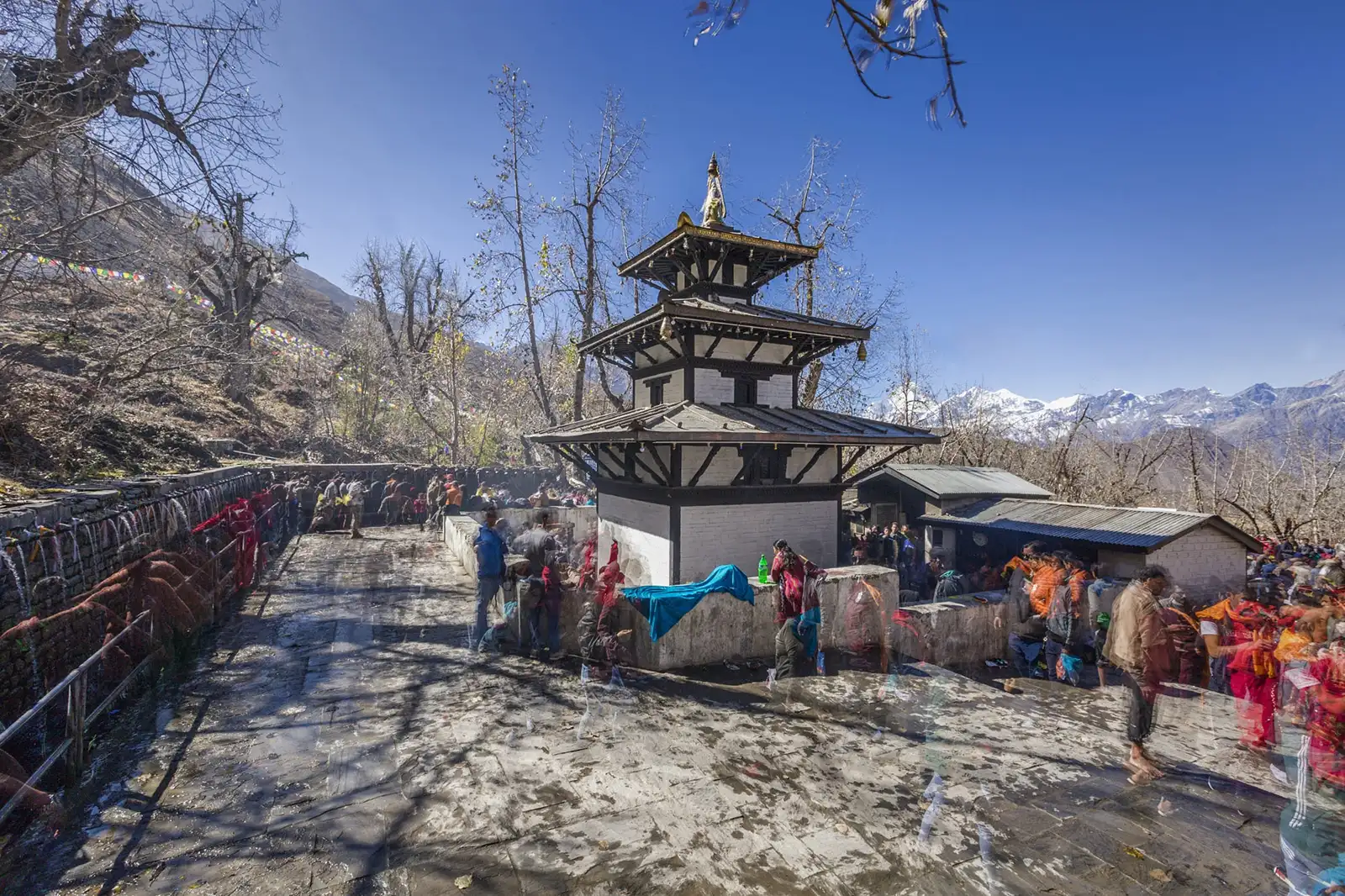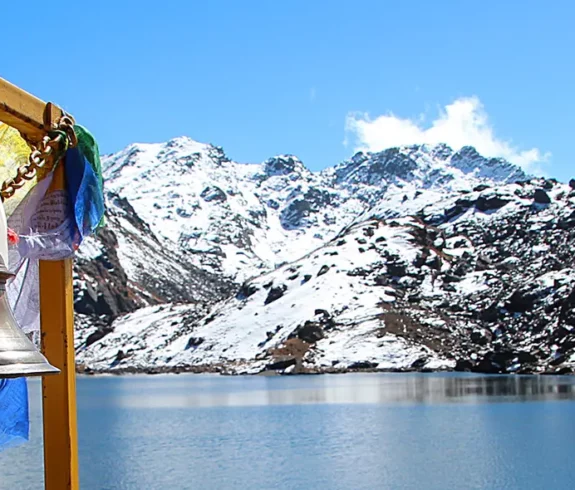Hindus and Buddhists from neighboring countries like India come to pay homage to Nepal’s many pilgrimage sites. Other mainstream traveler goals are also found in various parts of the nation besides the well-known worship of Pashupati and noteworthy locales such as Lumbini and Janakpur. While some are lovely and complicatedly planned sanctuaries worked by unknown artisans of past days, different spots are known for their fairs and celebrations or are blessed washing spots respected by the era of admirers. Here is a famous pilgrimage of Nepal.
Top Pilgrimage Sites of Nepal
Dolakha Bhimsen
In the upper piece of Dolakha Township lies the sanctuary of Bhimeshwar, prominently known as Dolakha Bhimsen. The general population of Dolakha views Bhimeshwar as their preeminent Lord. The roofless sanctuary houses a Shiva Linga, a sacred object. Fairs are held at this sanctuary for events such as Bala Chaturdashi, Ram Navami, Chaitra-Ashtami, and Bhima Ekadashi. Amid the Dashain celebration, goats are relinquished here. Roughly 200 meters from the Bhimeshwar sanctuary is the sanctuary of Tripurasundari, where fans amass amid the celebrations of Chaitrastami and Dashain. Only the minister of this sanctuary is permitted to look at the picture revered inside.
Devghat
Devghat holds a special place in the pilgrimage of Nepal, resting at the sacred confluence of the Kali Gandaki and Trisuli rivers. Located just north of the Royal Chitwan National Park, this spiritual site draws Hindu devotees year-round, especially during the Makar Sankranti festival in January. Thousands gather to take holy dips in the river, seeking purification and blessings.
Several important religious and historical sites surround Devghat, offering meaningful side visits. These include the Triveni Temple and Balmiki Ashram—where Sage Balmiki once meditated—the Someswar Kalika Temple and ancient fort, Pandavanagar, believed to be linked to the Mahabharat heroes, and the Kabilaspur Fort, built by the former kings of Palpa. Together, they enrich Devghat’s role in Nepal’s spiritual and cultural pilgrimage.
Kamala Maisthan
Kamala Maisthan is one of the most important religious spots of the Sindhuli locale and lies at the confluence of the Kamala and Gwang streams.
Located at 610 meters above sea level, it is eleven kilometers from Sindhulimadi and is associated with a jeepable road from Janakpur. On the principal day of the Nepalese month of Magh (January-February), a stupendous fair is held at Kamala Maisthan. Many travelers give up goats and pigeons, after which they sing a melody and move for the duration of the night.
Dhanusha
About twenty kilometers northeast of Janakpur stands Dhanusha, a revered location in the pilgrimage of Nepal. According to legend, this is where a piece of Lord Shiva’s mighty bow—shattered by Lord Rama during the swayamvar of Sita—fell to earth. The name “Dhanusha” comes from “Dhanu,” meaning bow.
Devotees gather here every Sunday in the month of Magh to bathe in the sacred waters and honor the site. The area becomes especially vibrant during Ram Navami and Bibaha Panchami, when religious fairs draw pilgrims across the region. These celebrations highlight Dhanusha’s deep spiritual connection to the epic of Ramayana and its lasting role in the cultural pilgrimage of Nepal.
Jaleshwar Mahadev
The memory of Jaleshwar Mahadev lies in the city of Jaleswar, the headquarters of the Janakpur zone. Jaleswar Mahadev is one of Nepal’s conspicuous spots of the journey and is said in the Hindu epic, Padma Purana.
As indicated by legends, a loner named Jagadish landed in the bereft backwoods of Jaleshwar and had a fantasy in which he was assigned to direct excavations on the spot. Following the fantasy, he started burrowing and soon found a picture of Jaleshwar Mahadev. He then manufactured a sanctuary with gold, which he brought from Sunukhadagarh.
Just before the Jaleshwar Mahadev sanctuary, there are two holy lakes called Barunsar and Kshiresar. Many travelers collect at these lakes during the Ram Navami and Bivaha Panchami celebrations.
Gosainkunda – Most visited Pilgrimage of Nepal
One of Nepal’s most acclaimed spots of the journey is the blessed pool of Gosainkunda, at an elevation of 4,380 meters above sea level. Encompassed by a higher landscape towards the east and north, this kunda or lake is excellent and beautiful. On the east and west of the Kunda are nine different lakes, including Saraswatikunda, Bhairavkunda, Sooryakunda, and Ganeshkunda. Consistently, amid Janai Poornima in August, many Hindu pioneers and fans trek to this spot to wash up and take part in the festival.
Muktinath
The well-known sanctuary of Muktinath lies in the Mustang region and is situated on a high mountainside. Amid the celebration of Janai Poornima, Hindu lovers gather at this spot to pay reverence to Lord Muktinath. Dharmashala and Maharani Powa (resting places for pioneers) are given to guests and explorers. Various divine beings and goddesses are cherished around one hundred meters south of the sanctuary. On the sanctuary’s grounds are three openings from which blazes shoot forward persistently. Since antiquated times, divine blazes of Jwala have been revered as Jwaladevi (the goddess of fire).

Swargadwari
Located in the western hills of Pyuthan District, Swargadwari is a prominent site in the pilgrimage of Nepal. About 26 kilometers south of Khalanga Bazar, the district headquarters, Swargadwari holds deep spiritual meaning for Hindu devotees. The name “Swargadwari” translates to “gateway to heaven.” Legend connects the place with ancient sages who practiced deep meditation and penance here.
One sage, Padma Gin, gained spiritual enlightenment through years of repentance and service to the local community. He built a sacred pond and initiated the Akhanda Hom—an eternal fire ritual that continues today. After his death, he was buried at the site, where marble slabs now mark his resting place, and a temple was later built in his honor.
Swargadwari also maintains a herd of several hundred cows, which is part of the temple tradition. The temple trust manages accommodations and meals for pilgrims, preserving the site’s legacy of hospitality and devotion.
At the summit of Swargadwari, visitors can explore a serene cave where the sage once meditated. Large festivals occur each year during Baisakh Poornima and Kartik Poornima, drawing pilgrims from across Nepal and India. These gatherings reinforce Swargadwari’s sacred role in Nepal’s cultural and religious pilgrimage.
Jaljaladhuri, Rolpa
In the area of Rolpa in Rapti Zone, about seventy kilome¬ters north of Libang, the locale central station, lies the Parbat Dhuri (which means peak), 3,494 meters above sea level. On the Parbat, Dhuri is the three sanctuaries of Baju, Varah, and Kaile Varah.
As the prevalent story goes, long before Magar, adolescents named Karmapal and Dharmapal used to chase together. One night, they both had dreams in which Baju and Varah’s divine beings told Karmapal and Dharmapala, ‘Shoot your bolts in the bearing that the downpours, the winds, and the mists move.’ When they did, enormous snakes were executed, and the Jhyrabi River altered its course from east to west. After this, Baju, Varah, and the girl of the Satsalle god could live there gently.
Baju and Varah are worshiped as the watchman divinities of the Magar in Rolpa. Consistently amid Jestha Poornima and Janai Poornima, three-day fairs are held at these sanctuaries, and sheep and goats are relinquished.
Mai Pokhari, Ilam
Somewhere thirteen kilometers north of Ilam Bazaar lies the lake of Mai Pokhari, a position of journey arranged at an elevation of 2,438 meters. The outline of the lake is more than one kilometer. Out and out, nine lakes are in the range, some suitable for watercraft. Others have layers of greenery so thick that one can get lost in them.
Consistently amid Harisyani Ekadasi, a one-night festival is held at this temple; there are no yield creatures. The range is an outing spot with a sanctuary and a loner’s cabin. Neighborhood individuals assert that Mai Pokhari is steadily moving and changing its area. From the Ilam bazaar, it takes four hours to reach Mai Pokhari by jeep. In transit are the towns of Chure Ghanti, Bakhaute, Dharapani, and Jasbir Bahanjyang, which offer different perspectives of the cold crests toward the north.
Solu-Khumbu: A Spiritual Heart in the Pilgrimage of Nepal
Solu-Khumbu, part of the Sagarmatha Zone, represents natural grandeur and spiritual depth. Known globally as the region that hosts Mount Everest (Sagarmatha), it also stands as a center of Buddhist culture in the pilgrimage of Nepal. The area houses many ancient Gompas (monasteries), each of which is of religious and cultural importance for both locals and visiting pilgrims.
Major Monasteries in Solu-Khumbu
Solu-Khumbu features several key monasteries that contribute to its spiritual atmosphere:
- Thyangboche Monastery
Perched at 3,900 meters, Thyangboche is the most recognized monastery in the region. Though recently damaged by fire, it is being rebuilt with community support. Located against the backdrop of Ama Dablam, the monastery also provides a stunning view of Mt. Everest, flanked by Lhotse and Nuptse. During Mani Rimdu, a major local festival, the monastery draws pilgrims across Nepal and beyond. - Junbesi Monastery
One of the oldest in the region, Junbesi Monastery holds a massive statue of Lord Buddha and plays a central role in local religious life. It becomes especially lively during festivals like Dumje, where locals and visitors gather to celebrate and worship. - Other Important Monasteries
Additional monasteries across Solu-Khumbu include Chiwong, Pangboche, Gumila, Kyorok, Thame, Shingefu, Thaksindu, Thaktoo, and Goli. Each offers a distinct spiritual experience, with traditional architecture, peaceful settings, and sacred rituals preserved through generations.
Pilgrimage and Trekking Together
The region blends pilgrimage with trekking. Trekkers often follow trails that pass through these monasteries, making spiritual stops. Whether visiting for religious reasons or as part of a cultural trek, Solu-Khumbu delivers both serenity and awe.
As a vital destination in the pilgrimage of Nepal, Solu-Khumbu allows visitors to witness Himalayan beauty while connecting deeply with Tibetan Buddhist traditions.
